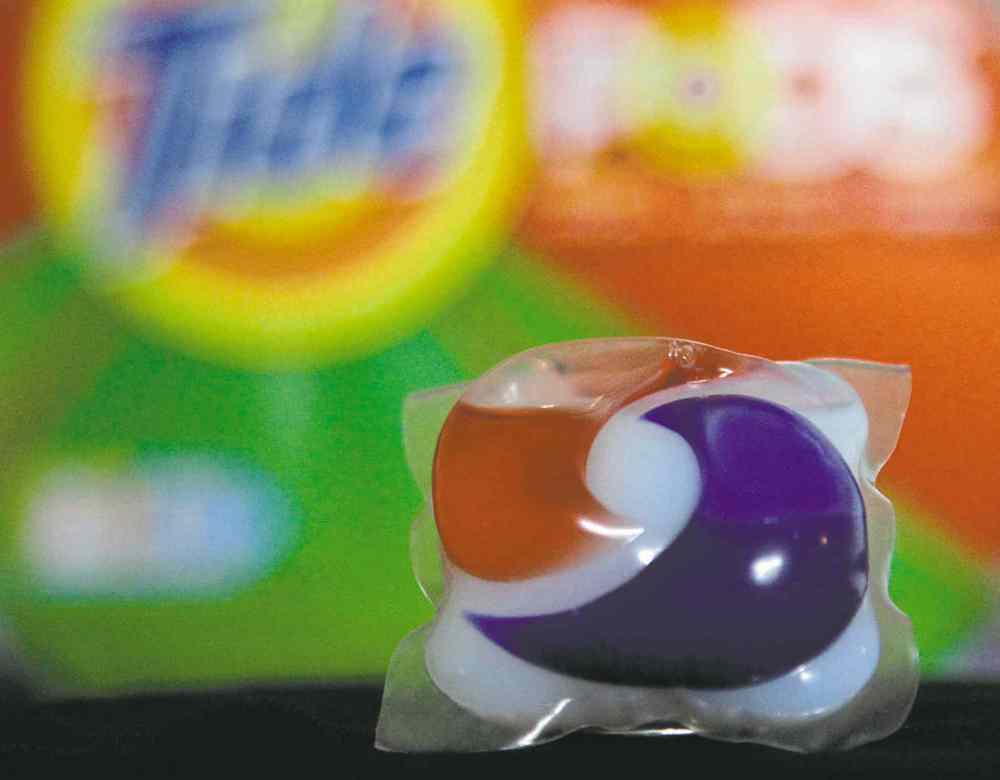Laundry pods pose a health hazard for kids biting into them
Poison centres fielding calls after children bite into colourful packs
Advertisement
Read this article for free:
or
Already have an account? Log in here »
To continue reading, please subscribe:
Monthly Digital Subscription
$1 per week for 24 weeks*
- Enjoy unlimited reading on winnipegfreepress.com
- Read the E-Edition, our digital replica newspaper
- Access News Break, our award-winning app
- Play interactive puzzles
*Billed as $4.00 plus GST every four weeks. After 24 weeks, price increases to the regular rate of $19.00 plus GST every four weeks. Offer available to new and qualified returning subscribers only. Cancel any time.
Monthly Digital Subscription
$4.75/week*
- Enjoy unlimited reading on winnipegfreepress.com
- Read the E-Edition, our digital replica newspaper
- Access News Break, our award-winning app
- Play interactive puzzles
*Billed as $19 plus GST every four weeks. Cancel any time.
To continue reading, please subscribe:
Add Winnipeg Free Press access to your Brandon Sun subscription for only
$1 for the first 4 weeks*
*$1 will be added to your next bill. After your 4 weeks access is complete your rate will increase by $0.00 a X percent off the regular rate.
Read unlimited articles for free today:
or
Already have an account? Log in here »
Hey there, time traveller!
This article was published 13/04/2015 (3823 days ago), so information in it may no longer be current.
Brightly coloured laundry pods, the kind with concentrated detergents that are tossed into washing machines every day, are ending up in kids’ mouths instead.
While most kids who ingest the pods end up with minor nausea, there are children who suffer extreme vomiting and drowsiness. In the most severe cases, some are put on ventilators in hospital to recover.
“Often, the children are put on ventilators to allow their lungs time to heal,” said Heather Hudson, an official with the Manitoba Poison Centre.

Others suffer “profuse vomiting, and they can become extremely drowsy,” she added.
Across Canada, poison centres are logging calls mostly from frantic parents about the pods that have been eaten, inhaled or burst, irritating skin and eyes. The Manitoba Poison Centre tracked 120 calls in two years, between 2012 — when the pods first appeared on the Canadian market — and 2014.
“The majority of children, under five, are putting it in their mouths… They can bite into them. The plastic is fairly soft; they’re meant to dissolve. They dissolve fairly rapidly with their saliva. Or if a child bites into it, it can burst open quite easily,” said Hudson, who is an advanced nursing-practice educator with the Manitoba Poison Centre.
The numbers weren’t available for the first three months of 2015, and because Manitoba’s centre is part of the Ontario Poison Centre, Hudson said she could not say whether the kids on ventilators were in Manitoba or Ontario.
A flurry of news reports followed on the heels of a Canadian survey, with 54 reports of children injured by contact with laundry and dishwasher pods. More than half were under age two.
All but two were treated in emergency wards or clinics and doctors’ offices.
The survey, published in Paediatric Child Health last month, documented nausea, vomiting, chemical burns to the mouth, esophagus or skin, corneal injuries to the eye and pneumonitis, a kind of pneumonia caused by chemicals inhaled into the lungs.
Another recent American survey by the United States Poison Control Centres recorded 17,000 reports of children exposed to chemicals in the pods, including several hundred serious injuries and one death.
In Manitoba, there was no breakdown available on the injuries or the ages, but most cases involved children under five years old.
There were also some adults who suffered eye irritation from chemicals spraying up after pods burst in their fingers.
“Certainly, they are a problem,” Hudson said in a phone interview from Sick Kids Hospital in Toronto. The Manitoba Poison Centre operates under the umbrella of the Ontario Poison Centre.
She advised parents to buy regular liquid or powder detergent to avoid any chance of a mishap.
“The key message is, if you have young children in the home, it’s probably best to stick with purchasing more traditional laundry products.
‘Often, the children are put on ventilators to allow their lungs time to heal’
— Heather Hudson, official with the Manitoba Poison Centre
Or, if you’re going to (buy pods), make sure they’re kept in a locked cupboard,” Hudson said.
Medical experts say concentrated chemicals contained in the pods pack enough detergent for a cup of regular powdered or liquid detergent.
“So when a child gets into them, we see worse symptoms than if a child stuck their finger into the same amount of regular old detergent,” Hudson said.
Add that to the colourful appeal of the pods, which are often mistaken for toys or candy, and the problem is obvious.
“If you go and buy some, you’ll see why they are so appealing to children,” Hudson said.
In Saskatchewan, meanwhile, there have been at least 219 calls from people exposed to the harsh chemicals in the pods, the Saskatoon Star Phoenix reported. That included one death of an elderly man in a long-term care centre with dementia who ate a pod.
In response, Saskatchewan’s Health Department issued an alert recently advising health facilities to lock down all their laundry pods.
Health Canada is working with the poison centres to track the cases of poisoning and with manufacturers to repackage the pods in more opaque colours.
alexandra.paul@freepress.mb.ca

